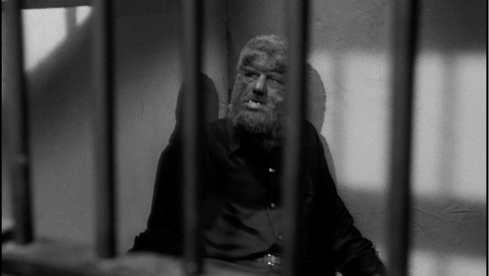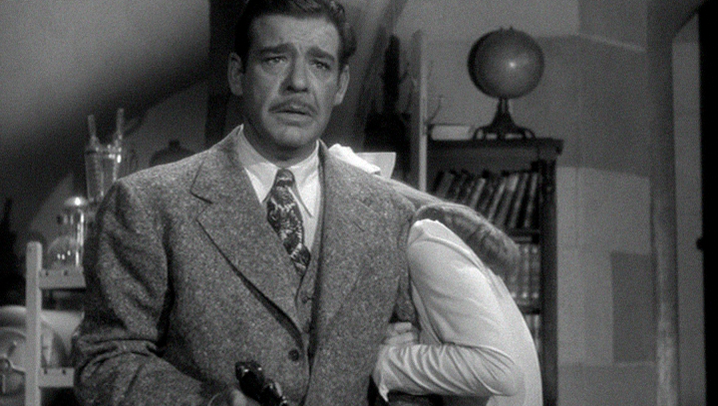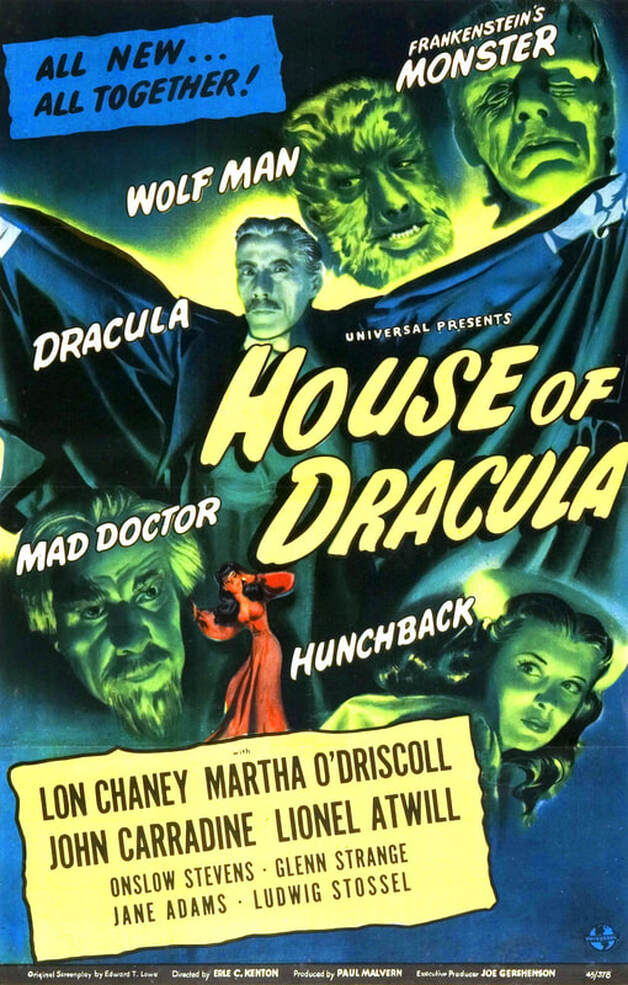 Welcome to a weekly series in which Doris V. Sutherland takes readers on a trip through the history of werewolf cinema... ...House of Dracula (1945) introduces us to Dr. Edelman (Onslow Stevens), a gifted medical practitioner who happens to have an odd line in patients. One is Count Dracula (John Carradine), who arrives at the doctor’s practice asking for his blood-drinking ways to finally be cured. Another is the Wolf Man Larry Talbot (Lon Chaney Jr) who likewise wants release from his lycanthropy. Finally, with the aid of Talbot, the doctor happens upon the pet project that has corrupted so many a noble scientist: the comatose form of Frankenstein’s Monster (Glenn Strange). Produced in the dog days of the Universal horror cycle, House of Dracula marks an almost apologetic attempt on the parts of director Erle C. Kenton and screenwriter Edward T. Lowe to move the studio’s monsters from their supernatural origins and give them pseudo-scientific explanations – with results that can hardly be called convincing. Although we see Dracula turn into a bat before our eyes, we are still assured that his condition was brought about by an exotic blood parasite. As for the Wolf Man, well: “During the period in which your reasoning processes give way to self-hypnosis the glands that govern your metabolism get out of control, like a steam engine without a balance wheel. When this happens the glands generate an abnormal supply of certain hormones – in your case, those which bring about the physical transformation which you experience.” Somehow, this is less believable than the business of curses. Indeed, de-monsterification of one sort or another runs through the film. While Dracula gets a larger role than he did in House of Frankenstein, he spends much of his screentime as a medical patient rather than a dread figure of evil. Dr. Edelman has a hunchbacked assistant in Nina (Jane Adams), who was touted amongst the movie’s monsters on posters, but unlike the ghoulish assistants in earlier Frankenstein films – where hunchbacks were portrayed almost as familiar spirits – Nina is humanised as a woman who happens to have a deformed back. Indeed, she is first introduced as a typically glamorous Hollywood nurse, her hump only becoming visible when she walks away from the camera. Frankenstein’s Monster, meanwhile, has by this point been reduced to a destructive prop rather than a character, filling the same role as the lever he pulled at the climax to Bride of Frankenstein. That just leaves the Wolf Man and the mad scientist, played by Lon Chaney Jr. and Onslow Stevens. Notably, House of Dracula is the only Universal monster crossover to feature neither Boris Karloff nor Bela Lugosi, making Chaney the only true genre star to appear – unless we count Lionel Atwill, who gets a forgettable role as a police inspector. Chaney puts in a sympathetic performance as a heroic character, his Wolf Man being finally cured and redeemed, but it is Stevens – a fairly prolific but now largely forgotten actor – who truly leaves an impression as Dr. Edelman. Edelman is initially a benevolent character, but during the course of the film he makes the foolish decision to undergo a blood transfusion with Dracula. When the Count dies, his spirit possesses Edelman’s body and causes him to develop a malicious nocturnal alter ego – effectively adding Dr. Jekyll and Mr. Hyde to the film’s monster mash, although the scenes of evil Edelman being chased around the city seem to have been influenced by Nosferatu. Stevens’ impish performance as the impromptu Dr. Hyde can hardly be called subtle, but its sheer energy really does save the film in its latter half. Released at a time in which science fiction was poised to overtake Gothic horror, House of Dracula comes across as a last-ditch effort to keep the Universal monsters relevant (well, not quite last ditch: the Abbott and Costello films were still to come). It ends up something of a hodge-podge, but it retains some curiosity value – and enough of a heart to give a happy ending to Larry Talbot, the first celluloid werewolf to come back for encores. By Doris V. Sutherland Enjoy Doris' writing? Leave her a tip here through Ko-fi!
0 Comments
Leave a Reply. |
Archives
March 2023
|


 RSS Feed
RSS Feed